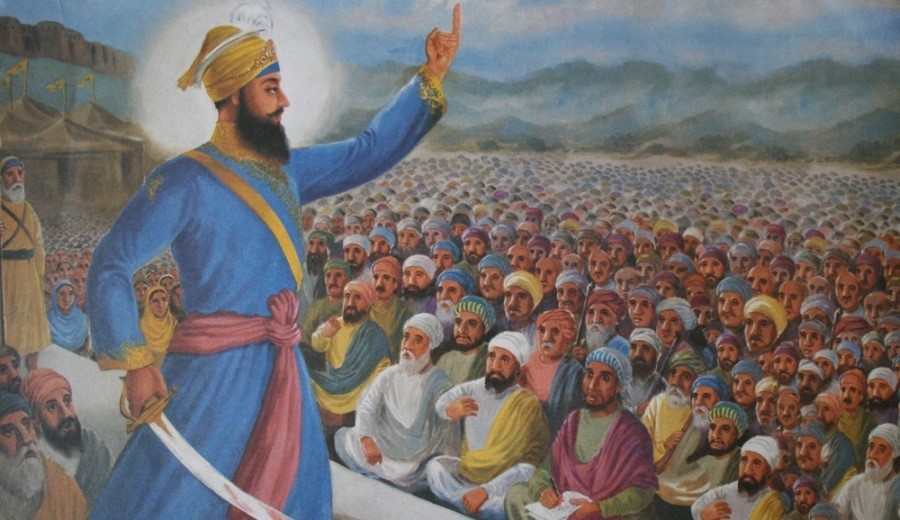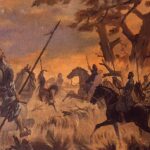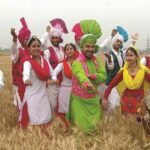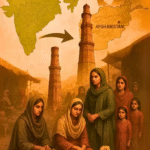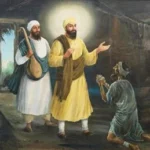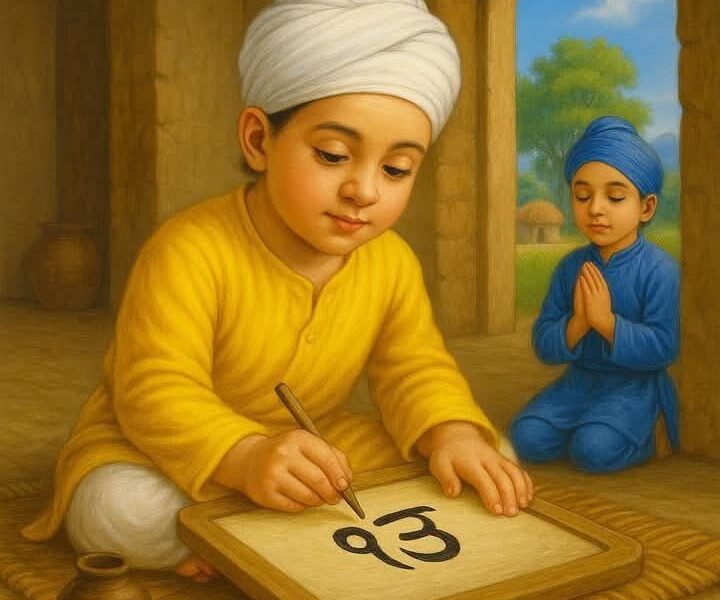Guru Gobind Singh summoned his disciples from all over India to a special meeting at Anandpur on Vaisakhi Day, March 30, 1699, several months previously. As a result, hundreds of worshippers and observers gathered at Anandpur Sahib on that specific day. Many had arrived out of curiosity, while others had come out of respect for the Guru and in response to his call. The Guru delivered a passionate oration to the congregation on the scheduled day about his divine purpose of restoring their faith and maintaining Dharam.
He displayed his unsheathed sword after his inspirational speech and declared that every great deed was preceded by an equally great sacrifice. With a naked blade in his hand, he inquired “I only require one head. Is there anyone here who is willing to die for his beliefs?” People were startled when they heard his call. Some of the dissenting believers left the congregation, while others stared in awe at one another.
Panj Pyaare
After a few moments, Daya Ram, a courageous Sikh from Lahore, stepped up and presented his head to the Guru. The Guru led him to a nearby tent, where he emerged with a blood-dripping blade after some time. Daya Ram was thought to have been killed by the Sikhs.
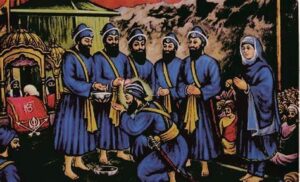
The Guru made a new demand, this time for another Sikh willing to die at his command. Even more individuals were shocked, and some were terrified when the second call came through. A few more of the dissenting believers began to quietly leave the congregation. Another person, to the surprise of many, stood up. Dharam Das was the second Sikh to volunteer.
This incredible scene didn’t come to an end there. Mohkam Chand, Sahib Chand, and Himmat Rai were the next three to offer their heads to the Guru. Each Sikh was led into the tent, and some people thought they heard a ‘thud’ sound as if the blade was about to fall on the Sikh’s neck.
With the Guru in the tent, the five Sikhs were now missing. It was a tense period for the sangat (congregation). As everyone concentrated on the tent opening, there was deafening quiet. The tent entrance moved after what seemed like an age, and the Guru emerged from the tent. This time there will be no naked sword!
The five Sikhs were soon brought to life in front of the assembly, dressed in beautiful new adorned robes. They formed the Panj Pyare, or Five Beloved Ones, who were baptized as Khalsa, or Pure Ones, under Amrit’s governance. “The Khalsa must be christened with Amrit generated with water churned with a double-edged sword – Khanda while the words of Gurbani are recited from now on,” the Guru proclaimed.
When the Guru gave Amrit to the Five Beloved Ones (Panj Pyare), he asked them to baptize him in the same way, stressing the Guru’s equality with his students.
The new rite was termed Khande di Pahul, or the baptism of the double-edged sword, also known as Amrit-Sanchar, by Guru Gobind Singh. While the five Sikhs stood facing him, he churned water in an iron bowl with his sword, reciting five great compositions, Japji, Jaap, Savaiyye, Benti Chaupai, and Anand Sahib. Mata Sahib Kaur, the Guru’s wife, added some sugar puffs to the water. “Khanday-da-Amrit” or simply “Amrit” was the name given to the nectar obtained in this way. This meant that the new Khalsa brotherhood will be both courageous and humble.
When the Guru gave Amrit to the Five Beloved Ones (Panj Pyare), he asked them to baptize him in the same way, stressing the Guru’s equality with his students.
The new rite was termed Khande di Pahul, or the baptism of the double-edged sword, also known as Amrit-Sanchar, by Guru Gobind Singh. While the five Sikhs stood facing him, he churned water in an iron bowl with his sword, reciting five great compositions, Japji, Jaap, Savaiyye, Benti Chaupai, and Anand Sahib. Mata Sahib Kaur, the Guru’s wife, added some sugar puffs to the water. “Khanday-da-Amrit” or simply “Amrit” was the name given to the nectar obtained in this way. This meant that the new Khalsa brotherhood will be both courageous and humble.
Creation of Khalsa
The formation of Khalsa signified the conclusion of about 240 years of training given to Sikhs by the ten Gurus. The Guru desired to produce ideal people who were excellent in every way, with a blend of devotion (Bhakti) and power (Shakti). In the image of his Sikh, he linked generosity (Deg) with the sword (Tegh).
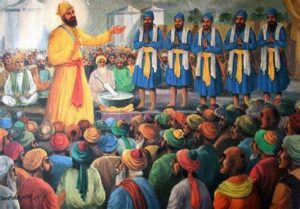
The Khalsa was supposed to be a saint, a soldier, and a scholar, all of whom had high morals and good character. He or she would be powerful, brave, intelligent, and smart.
The Guru instilled in him the five virtues of sacrifice, cleanliness, honesty, charity, and courage, as well as a Rehat – the Sikh code of discipline – to shape his personality.
The Khalsa’s strength is a blend of righteousness and bravery. This is a safeguard against the merciless exploitation of the masses by their rulers, as well as a means of overcoming the obstacles that arose in the everyday practise of holiness and spiritualism.
Guru Gobind Singh instructed the Khalsa to only wield the sword in times of emergency, when peaceful ways had failed, and only for self-defense and the protection of the oppressed.
Baisakhi Story
The Vaisakhi Festival, also known as Baisakhi, is a significant date in the Sikh calendar. It marks the start of the Punjabi New Year as well as the year 1699, when Sikhism was established as a communal faith and religion.
Vaisakhi was always observed as a harvest festival in Punjab, a region of Northern India, before it gained significance as a Sikh religious festival. On the day of Baisakhi in 1699, Guru Gobind Singh founded the Khalsa, the collective designation given to all Sikhs who have been baptised. Since then Baisakhi has been celebrated in Punjab.
